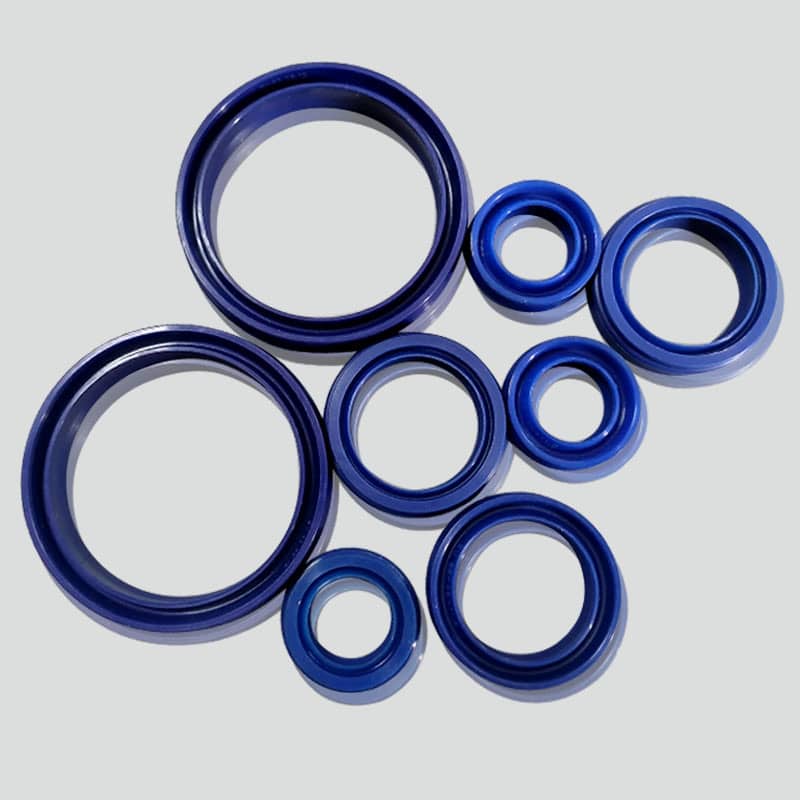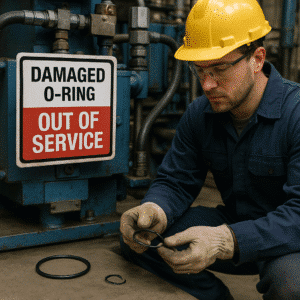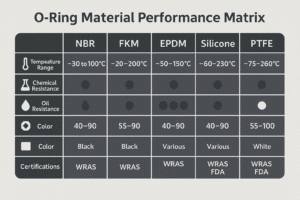Are your automation systems losing efficiency due to seal failure or air leakage? Poor seal selection can cripple pneumatic performance. This guide reveals how to choose and maintain the right seals for automation.
Choosing the right pneumatic cylinder seals improves automation speed, stability, and lifespan — reducing downtime and keeping production lines moving.

In automated systems, a worn or incompatible seal can halt operations in seconds. With more manufacturers upgrading to smart factories, ensuring reliable pneumatic sealing is now more important than ever.
Why Pneumatic Cylinder Seals Matter in Automated Equipment?
Automation demands consistent linear motion. But air loss, friction, or seal swelling quickly lead to:
- Pressure drops
- Unstable stroke
- Cylinder sticking or failure
A well-chosen seal not only prevents air leaks but also reduces wear on cylinders and pistons. Hengoseal's pneumatic piston & rod seals are engineered for automation environments — from high-cycle robotics to precision presses.
How to Select the Right Pneumatic Seal for Automation Use?
Here’s a proven framework I use to match seals with automated systems:
| 선택 요인 | 왜 중요한가 | Hengoseal Solution |
|---|---|---|
| 재료 | Affects durability & friction | NBR, TPU, FKM, PU, PTFE |
| Seal Profile | Matches stroke speed & load | U-cup, D-ring, compact seals |
| 온도 범위 | Automation systems may run hot | Up to 200°C with FKM |
| Cycle Life | High repeat use needs robust seals | Tested 1M+ cycles |
| 윤활 호환성 | Avoids swelling or hardening | Oil-free or grease-resistant materials |
우리는 또한 제공합니다 a full guide to pneumatic cylinder seals that outlines application-specific sealing configurations.
Maintenance Tips to Extend Pneumatic Seal Life
Even the best seals fail early if not maintained correctly. Use these tips to extend service life:
- Keep cylinders clean – Dust and particles wear seals faster.
- Use filtered, dry air – Moisture degrades seals over time.
- Replace wiper seals regularly – Prevents dirt ingress into the cylinder.
- Check for pressure fluctuations – Spikes cause rapid wear.
- Avoid over-lubrication – Can swell or deform seals.
For example, we recently upgraded a client’s 더스트 와이퍼 씰 in a packaging line. The result? 2× seal life and 15% fewer cylinder faults over 6 months.
Best Seal Materials for High-Speed Automation
Each automation environment demands specific properties:
| 재료 | 이상적 | 속성 |
|---|---|---|
| 영어: NBR (네이버) | General use | 내유성, 비용 효율성 |
| 티피유 | High-cycle speed | High wear resistance |
| 에프케이엠 | Heat & chemicals | Temperature up to 200°C |
| PTFE | Dry run or no lubrication | Low friction, chemical-proof |
We help clients match material to motion specs — such as using KDAS 컴팩트 씰 in fast-stroke pneumatic cylinders.
Common Problems in Pneumatic Seals — and How to Fix Them
- Seal extrusion: Usually caused by oversized cylinder gaps or pressure spikes.
- Seal swelling: Caused by incorrect lubrication or chemical exposure.
- Hardening: Results from heat aging, especially with cheap materials.
- Compression set: Seal loses elasticity, causing air leaks.
The key is choosing the right material and profile from the start — not just reacting to failures.
결론
Reliable pneumatic cylinder seals are the foundation of smooth, long-lasting automation. Choosing the right seal now prevents costly downtime later.
Related topic
Top Benefits of Pneumatic Cylinder Seals in 2025
5 Common Problems with Pneumatic Seals & How to Fix
TPU vs NBR: Which Seal is Best for Pneumatic Systems?
Let Your Automation Run Smoothly — Partner with Hengoseal
Need durable, low-friction pneumatic seals tailored for automation? We support custom profiles, low MOQ, and rapid global delivery.
오늘 저희에게 연락하세요:
- 이메일: [email protected]
- 왓츠앱: +86 17622979498
Get samples or a quote in 24 hours.


